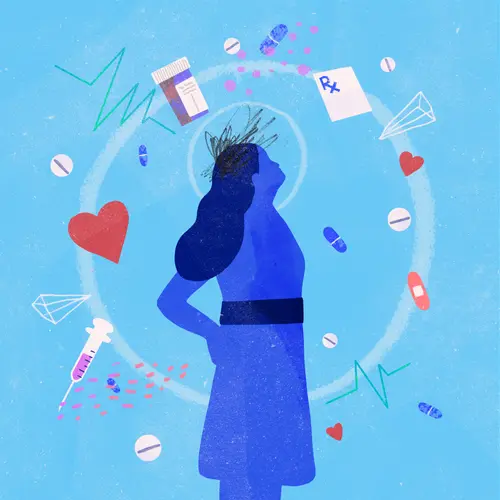Amyotrophic lateral sclerosis, or ALS, is a disease that attacks the nerve cells in your brain and spinal cord. There is no known cure.
But doctors do have treatments and therapies that can slow down or ease symptoms in you or a loved one.
Researchers continue to study ALS, hoping to learn more about its causes and possible new treatments.
What Is ALS?
It’s commonly known as Lou Gehrig’s disease, after the baseball player whose diagnosis and eventual death brought wide public attention to the illness.
This condition kills the nerves that control motion in your body. As those nerves die, you lose control of your muscles. As the disease worsens, you lose the ability to walk, speak, swallow, and eventually, to breathe.
About 1 person in 25,000 will be diagnosed with ALS. Most of them die within 2 to 5 years of being diagnosed, usually because of respiratory failure. However, a small group, about 5% of those with ALS, have been able to survive for 20 years or more.
Medication for ALS
There are severalmedications which have proven helpful in slowing the progression of ALS and extending the life of those who have been diagnosed with the disease. While they have been shown to push back the time when you’ll need mechanical help to breathe, they can’t fix damage already done.
Edaravone (Radicava): administered through IV, it is an antioxidant that can prevent damage to nerve cells from toxic substances called free radicals. But it is unclear how it works to slow the physical progression of patients with ALS. The most common side effects include bruising, unsteady gait, and headache.
Dextromethorphan HBr and Quinidine Sulfate (Nuedexta): This medication is used to treat a certain mental/mood disorder (pseudobulbar affect) that may accompany ALS. This medication may help decrease sudden outbursts of uncontrollable/inappropriate laughing or crying.
Tofersen (Qalsody): This medication is given by injection into the spine. It is given as directed by your doctor, usually once every 2 weeks for the first 3 doses and then once every 4 weeks.
Riluzole (Exservan, Rilutek): taken orally, it helps reduce damage to your motor nerves by reducing the amount of glutamate in your system. (Glutamate carries chemical messages to your nerves. Too much of it can damage the cells). The most common side effects include gastric distress, dizziness and bruising.
Medication for Symptoms
Pain relievers or muscle relaxants such as baclofen (Gablofen, Kemstro, Lioresal) or diazepam (Diastat, Valium) can help ease cramps.
A variety of medications can lower how much saliva you make. It often builds up in your mouth as swallowing becomes more difficult. One of the most common medications is glycopyrrolate (Robinul).
Doctors may prescribe drugs to help ease other symptoms of ALS, which may include:
- Constipation
- Depression
- Outbursts of laughter or crying
- Lack of sleep
- Fatigue
Therapies
Most treatments for ALS involve managing the symptoms of the disease as it worsens. Some of them include:
Physical therapy and exercise: These keep your muscles strong and working as long as possible.
Hot tub and whirlpool baths: These can ease your muscle spasms or cramps.
Dietary counseling: This becomes really important when swallowing becomes a problem.
Speech therapy: Specialists can help you learn ways to make your speech more clear when you talk or other methods of communicating, such as writing with pen and paper or an alphabet board.
Occupational therapy: This can help you find ways to dress, bathe, and groom. A therapist can help you set up your home so it’s easier for you or a loved one to move around.
Tools and Devices
There are also a variety of tools and mechanical devices that can help if you have ALS:
Splints, reach extenders, and grab-bars: They can help you get around as the disease progresses.
Canes, walkers, and wheelchairs: They can help you stay mobile even as your ability to walk fades.
Computerized voice synthesizers: These are available when you lose the ability to speak. In the final stages of the illness, only about a quarter of people can talk clearly enough to be understood.
Respirator: It may be needed in the late stage of the disease to help you breathe. A doctor will have to insert a breathing tube directly into your windpipe. This is called a tracheostomy.
Feeding tube: As swallowing becomes harder, you might also need a doctor to insert a feeding tube into your stomach. This tube is called a PEG tube (percutaneous endoscopic gastrostomy).

